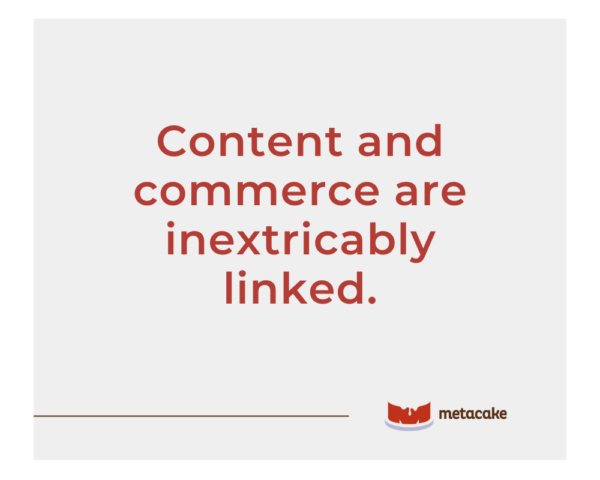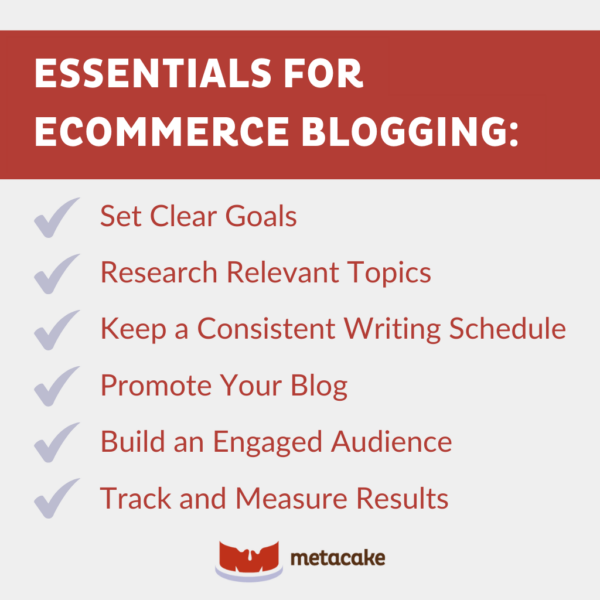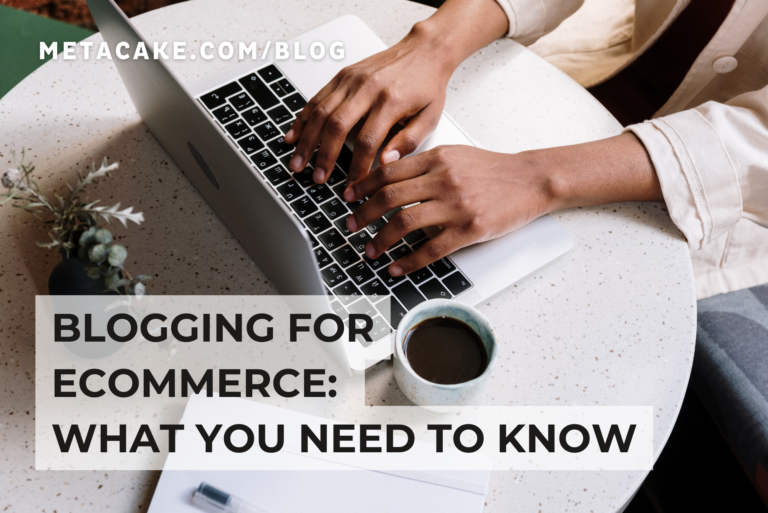There are plenty of excuses not to blog: You don’t know what to blog about; you think your industry is too boring; blogging makes you feel like a 16-year-old girl in 2001.
The list goes on and on.
Blogging isn’t easy. That much is true. But in the ecommerce business, blogging is so important.
Content and commerce are inextricably linked.

In this article, we’ll go over some benefits of blogging for ecommerce and share some essentials to get you started.
Blogging for Ecommerce
Blogging for ecommerce can be an effective way to grow your brand, generate traffic, and drive sales. Let’s take a look at some of the ways blogging can accomplish this.
1. Your Brand Is Your Differentiator
When customers are making a decision between you and a competitor, it’s going to come down to your brand and the relationship that your customers have with you.
Creating content that resonates with readers can help you stand out from the crowd and make people more likely to remember your brand for future purchases.
If your customers don’t know who you are and what you stand for, they won’t choose you. However, if your blogs can effectively communicate this information, you will undoubtedly earn lifelong customers.
Don’t take our word for it. Check out this study by Inc. Millennials are the most brand-loyal generation, so you must build a strong brand. Blogging is a great way to do this and turn your customers into loyal fans.
2. Blogs Are Evergreen
Unlike other ways to drive customers to your site, like PPC campaigns, your blog content is evergreen. It remains relevant and continues to attract readers long after it’s been published.
To keep your blog evergreen, keep these tips in mind:
- Choose timeless topics.
- Focus on quality content.
- Avoid time-sensitive content.
- Update regularly.
By following these strategies, you can create blogs that continue to drive traffic and remain a valuable resource for readers in the long term. Remember, evergreen content is not just about being timeless; it’s also about being continually useful and relevant to your audience.
3. Organic Traffic Is Free
Organic traffic is the number of visitors who land on your blog from unpaid sources, primarily through search engine results. It’s considered incredibly valuable because it’s targeted — people find your blog by looking for topics you’ve written about.
And how do you get organic traffic? Content.
Write relevant blogs for your audience, and you will build up your organic traffic. It won’t be instant. In fact, it takes quite a bit of time to build up organic traffic through your content. But once you do, it keeps on coming, and this traffic is free.
4. Blogging Is Free
Or at least it can be if you do it yourself! So if you don’t have any cash in the bank, blogging is your best marketing and brand-building option. Here’s how:
Accessibility
Free blogging platforms provide an accessible entry point for people to express themselves online without financial barriers.
Ease of Use
Many free platforms offer user-friendly interfaces, making it simple for anyone to start a blog, regardless of technical expertise.
Customization
Even free platforms often allow for a degree of customization, enabling bloggers to personalize the look and feel of their blogs to reflect their style.
Built-in Audiences
Platforms like Medium offer a prebuilt audience, which can help increase the reach and engagement of posts from the get-go.
No Financial Risk
Starting a blog on a free platform means there’s no financial risk involved. Bloggers can experiment with content and style without worrying about upfront costs or ongoing fees.
Monetization Opportunities
Free doesn’t mean you can’t make money. Bloggers can still monetize their sites through ads, sponsored content, or affiliate marketing, even on a free platform.

Essentials to Get Started Blogging for Ecommerce
Blogging for ecommerce can be a powerful strategy to grow your brand, increase traffic, and boost sales. Here are some essential steps to get started with successful ecommerce blogging:
Set Clear Goals
Define specific goals for your ecommerce blog. Whether it’s driving traffic, improving brand awareness, or increasing conversions, having clear objectives will guide your content strategy.
Research Relevant Topics
Understand what topics resonate with your target audience. Consider customer pain points, industry trends, and frequently asked questions. Your blog should address these topics effectively.
Keep a Consistent Writing Schedule
Establish a regular posting schedule. Consistency matters for building an engaged audience. Whether it’s weekly, biweekly, or monthly, stick to your chosen frequency.
Promote Your Blog Posts
Don’t just publish and forget. Promote your blog content across social media, email newsletters, and other channels. Encourage sharing and engagement.
Build an Engaged Audience
Interact with your readers. Respond to comments, ask questions, and encourage discussions. Building a community around your blog can lead to loyal customers.
Track and Measure Results
Use analytics tools to monitor your blog’s performance. Track metrics like traffic, time on page, bounce rate, and conversion rates. Adjust your strategy based on data insights.
Blogging for Ecommerce: Final Thoughts
So, now that you know how invaluable blogging for ecommerce is, are you ready to jump in? If you’re not quite there yet, that’s okay. We’re here to help.
Just reach out, and we’ll help you get started blogging today!
